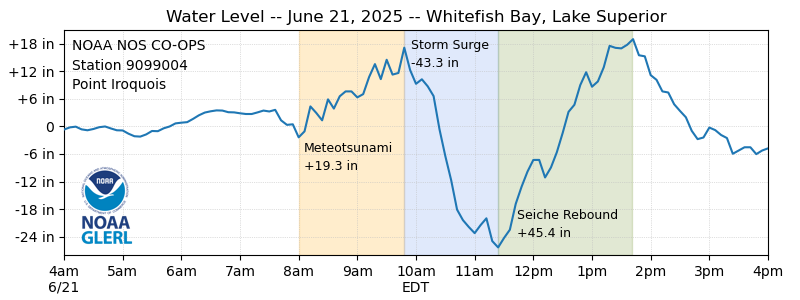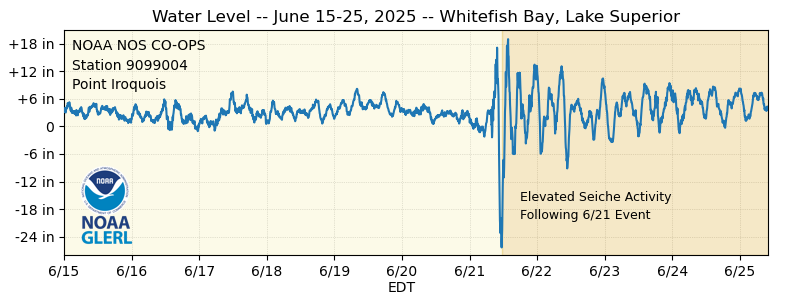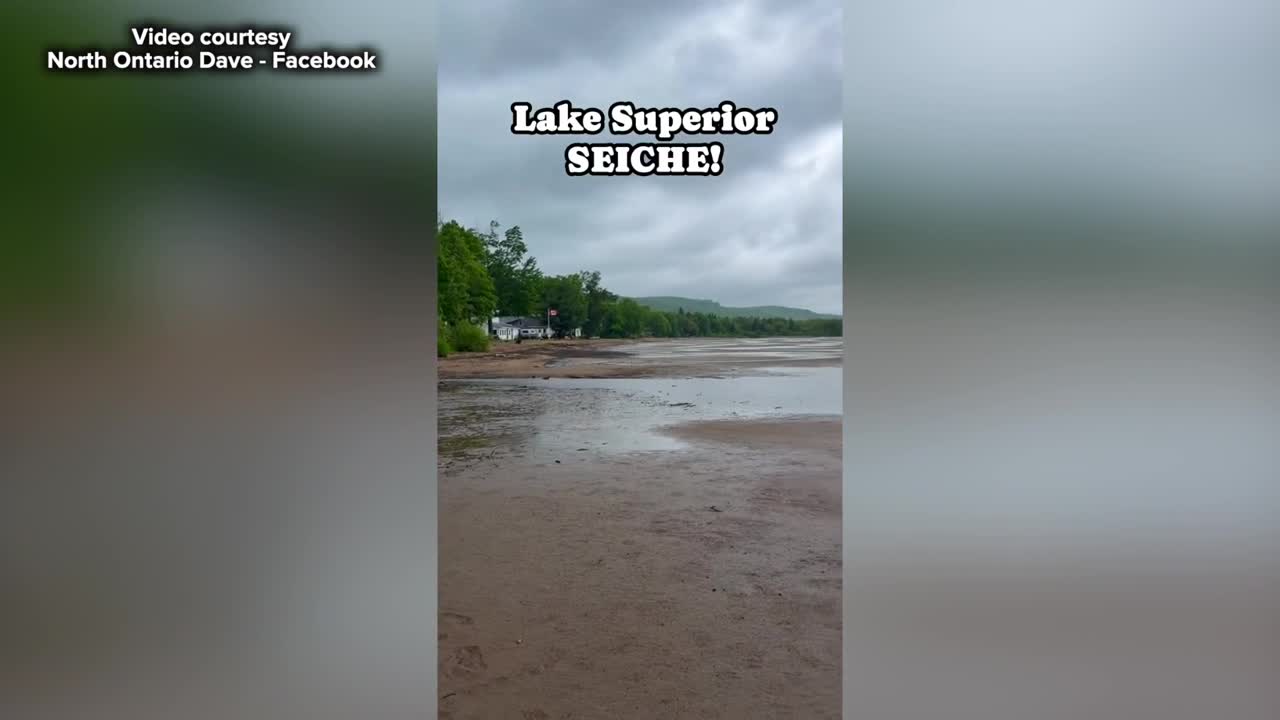(WXYZ) — The National Oceanic and Atmospheric Administration (NOAA) has released information on what it called a "significant meteotsunami and seiche" on Lake Superior last month.
Watch 7 First Alert Meteorologist Marisa Woloszyn break down what happened in the video below
The NOAA's Great Lakes Environmental Research Laboratory said the strong low pressure system moved across Lake Superior on the morning of June 21, which caused rapid and significant water level changes.
See video from June 21 below from North Ontario Dave on Facebook in the video below
"NOAA water level data from Lake Superior shows that the storm caused large fluctuation in water levels, triggering a multi-stage event, with an atmospheric pressure-induced meteotsunami, wind-driven storm surge, and strong seiche activity all interacting to generate the extreme water level fluctuations observed on the lake," the NOAA said in a blog about the situation.
The strongest impacts took place in the lake's southeastern region, according to the NOAA – around Whitefish Bay and Sault Ste. Marie.
On June 21, 2025, the NOAA said the Point Iroquois water level station, which is on Whitefish Bay, recorded a 45-inch water level increase in less than 2.5 hours. That's the largest water level surge ever recorded in the station's 30-year history.
According to the NOAA, a meteotsunami is when a storm moves at the same speed as the wave building in front of it. This then amplifies the wave and as it reaches shore, it produces a sudden rise in water level.
"As the June 21 storm moved west to east across Lake Superior, it produced a significant meteotsunami in eastern Lake Superior, and a water level rise of 19.3 inches between 8:00 AM and 9:48 AM was recorded at the Point Iroquois station as a result," the NOAA said.
At the end of the storm, there were 20-35 mph winds out of the south-southeast, which produced a wind-driven storm surge, driving water back to the northern and western portion of the lake and away from the southern shores.

According to the NOAA, a seiche is the oscillation of water back and forth across a large body of water. Lake Superior's size and shape result in it having a seiche that lasts around eight hours. That means it takes about eight hours for the water to slosh back and forth between Duluth, Minnesota and Sault Ste. Marie.

The NOAA said that the significant water fluctuations had notable impacts on shipping and boating, with many ships remaining offshore to avoid being grounded, docks being damaged and overturned and small boats being stranded or pushed into docks. However, there were no reported injuries.




